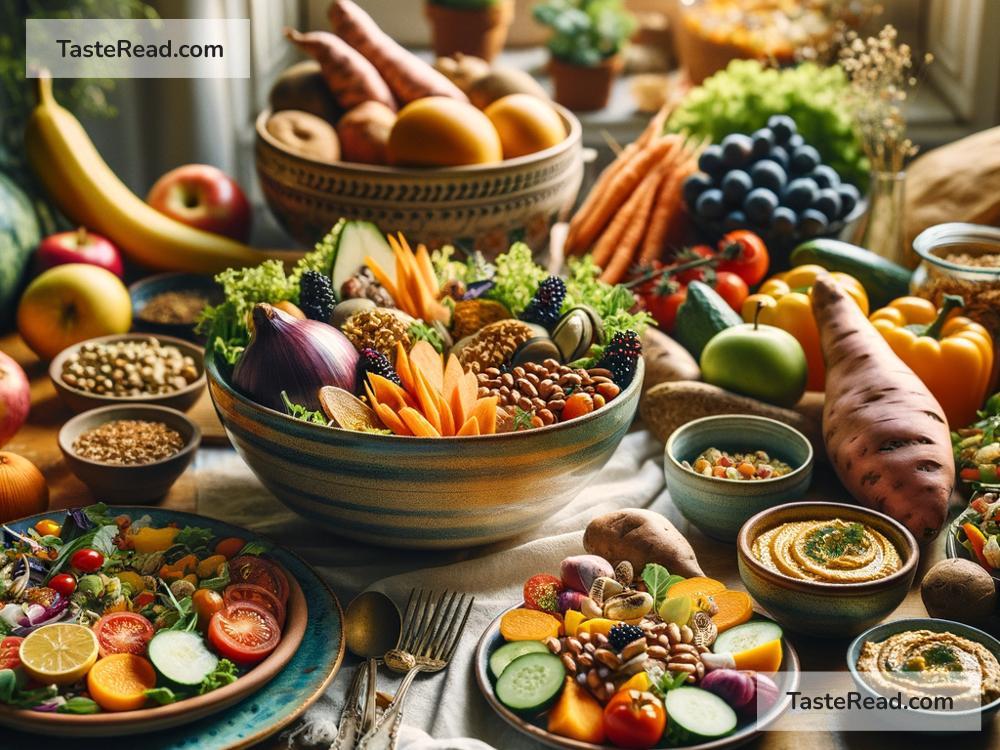The Science Behind Whole-Food Eating: Why It’s So Good for You
Eating isn’t just about filling our stomachs—it’s about fueling our bodies and minds for a happy, healthy life. But with so many processed foods, sugary snacks, and fast-food options available, it can be hard to know what you should eat for your wellbeing. That’s where whole-food eating comes in! In this blog, we’ll explore the science behind whole-food eating and explain why it’s one of the simplest and healthiest ways to nourish yourself.
What Are Whole Foods?
Whole foods are foods that come straight from nature. They haven’t been changed much—or at all—by humans. Think fruits, vegetables, nuts, seeds, beans, and whole grains. These foods are packed with nutrients and don’t have things like added sugars, artificial ingredients, or unhealthy fats.
On the other hand, processed foods are made in factories and often contain extra ingredients to improve taste, extend shelf life, or make them cheaper to produce. Think chips, fried snacks, instant noodles, and sugary sodas. While these foods might be convenient, they’re usually lacking in nutrition and can harm your health over time.
Why Is Whole-Food Eating So Good for You?
Whole foods are like nature’s superfoods. Science shows that eating mostly whole foods can boost your energy, prevent diseases, and even help you live longer. But why are they so powerful? Let’s break it down.
Packed with Nutrients
Whole foods are loaded with vitamins, minerals, and fiber that your body needs to stay strong and healthy. For example:
– Fruits like apples and berries are rich in Vitamin C, which helps your immune system.
– Vegetables like spinach and broccoli give you iron and magnesium for strong muscles and bones.
– Whole grains like oats and quinoa are full of fiber, keeping your gut happy.
When food gets processed—like turning whole wheat into white bread or fresh fruit into canned fruit—much of these nutrients are stripped away. That’s why whole foods are so much better for you.
Rich in Fiber
Fiber is a magical nutrient that helps your body in so many ways. It’s found in whole foods like beans, vegetables, and whole grains. Fiber helps:
– Keep your digestion smooth.
– Prevent overeating because it makes you feel full for longer.
– Control your blood sugar levels, which is super important for preventing diabetes.
Processed foods often lack fiber, making them less filling and worse for your digestion.
Less Sugar and Harmful Additives
Whole foods don’t contain any hidden sugars or chemical additives that processed foods usually have. When scientists studied diets high in processed foods, they found links to problems like heart disease, diabetes, and obesity. These effects come from things like added sugars, unhealthy fats, and high sodium levels in processed foods. Whole foods, on the other hand, are clean and pure—they don’t have these harmful extras.
Fights Chronic Diseases
Science backs up the fact that whole-food diets can fight off diseases like heart disease, diabetes, and even certain cancers. For example:
– Antioxidants found in colorful fruits and vegetables (like berries and carrots) help fight inflammation and protect your cells.
– The healthy fats in foods like nuts and seeds support your heart and brain.
– The fiber in whole grains and beans helps lower cholesterol and improves heart health.
Eating whole foods can reduce the risk of these diseases in the long run, so it’s like investing in your future health.
Better for Your Energy Levels
Ever feel sluggish after eating fast food or chips? That’s because processed foods often cause spikes in your blood sugar, followed by a crash, leaving you tired. Whole foods release energy slowly because they’re digested more steadily by your body. So, when you eat whole grains, fruits, and veggies, you’ll feel more alert and energized throughout the day.
Supports the Environment
Here’s another bonus! Eating whole foods is better for the planet. Local fruits, vegetables, and grains don’t contribute as much to pollution compared to highly processed foods that require factories and long-distance shipping. Choosing whole foods supports sustainable farming and reduces waste—in other words, it’s a win-win for you and the Earth.
How to Eat More Whole Foods
Making the switch to whole-food eating doesn’t have to be hard. Start small:
1. Swap white bread for whole-grain bread.
2. Grab a fresh apple instead of eating a bag of chips.
3. Cook simple meals like roasted veggies or stir-fried quinoa instead of relying on packaged dinners.
Over time, your body will feel the difference. You’ll enjoy better digestion, clearer skin, more energy, and even improved mood.
Whole-food eating isn’t about perfection—it’s about progress. You don’t have to give up all processed foods at once. Instead, aim to include more fresh fruits, vegetables, nuts, seeds, and grains in your meals, one step at a time.
Final Thoughts
The science behind whole-food eating is simple: whole foods are packed with nutrients, fiber, and healthy fats, while processed foods often lack these essentials. By eating more whole foods, you’re giving your body the tools it needs to stay healthy, fight disease, and feel great every day.
So, the next time you sit down to eat, think of food as fuel. Choose foods that help your body—not ones that harm it. Whole-food eating isn’t just a trend—it’s the key to a healthier, longer, and happier life.


